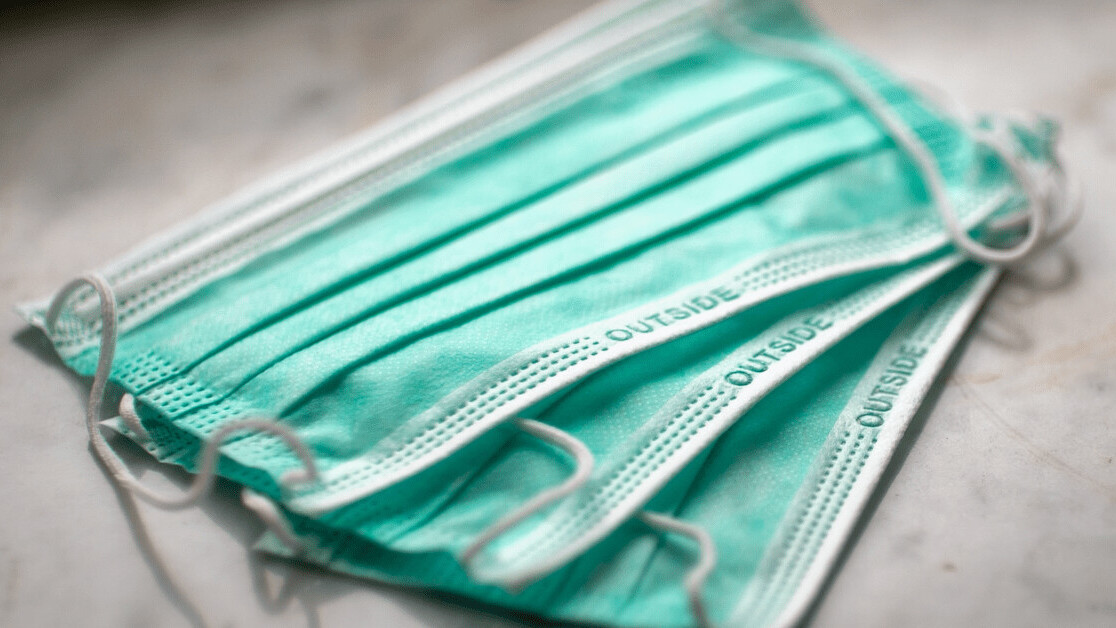Facemasks have become big drivers of e-commerce. In August, Etsy’s quarterly earnings report showed mask sales on the site reached $346 million in the second quarter of 2020. During the same period, face mask sales netted the struggling retailer Gap Inc. $130 million. And the global mask market is projected to grow to $2.3 billion by 2027. Cloth and paper masks routinely make best seller lists on Amazon in multiple categories including “Tools & Home Improvement,” “Health & Household,” and “Beauty & Personal Care.”
But are all those products equally effective at stopping COVID-19?
There is a growing scientific consensus that face coverings can help stop the spread of the virus. (Though doctors say you should keep washing your hands and social distancing as well.)
Contagious people likely release COVID-19 germs when they speak, yell, sing, sneeze, or cough, especially indoors, where poor ventilation may allow the virus to linger in the air longer. One example: this choir practice in Washington State, where after two and a half hours of singing together inside, one contagious person likely infected 87 percent of the 61-person group.
Put several layers of fabric in front of those open mouths and disease-carrying droplets of saliva are blocked from traveling out into the world.
Take this instance of two COVID-positive hair stylists who saw a total of 139 clients while presumably contagious. Everyone involved wore masks, and none of the clients tested positive for the virus after their appointments. Compelling anecdotal reports like this are also backed up by peer-reviewed research like this article and this meta-analysis, which both found that surgical masks, which are fluid resistant and usually made of a combination of paper and the plastic-derived fabric polypropylene, block significant amounts of virus from entering the air.
Face masks may also protect against coronavirus by creating a barrier that keeps us from inhaling lots of virus particles. As Dr. Monica Gandhi of the University of California, San Francisco theorized in a paper published in the peer-reviewed Journal of General Internal Medicine in July, “universal masking reduces the ‘inoculum’ or dose of the virus for the mask-wearer, leading to more mild and asymptomatic infection manifestations.”
So the guidance is clear on one point: wear a mask. But what kind?
That can be harder to figure out. As Gandhi pointed out, studying mask-wearing is quite hard.
“There’s actually not great studies of people putting on different masks and spraying COVID-19,” she told The Markup. “We can’t do that. That’s unethical.”
Scientists are slowly gathering data on the novel coronavirus, but they have also extrapolated information from the transmission of better understood diseases like influenza.
We spoke to a number of experts who offered guidance on which masks are worth the money—and which are more likely to be pseudoscientific marketing ploys. Here’s what we learned:
Fit is king when it comes to masks—and fabrics help with that
Even N95 masks, the gold standard of antiviral technology that filter out 95 percent of very small particles, won’t work as well if they don’t fit properly. Health care professionals do regular tests to make sure their masks fit their faces.
For the rest of us, masks don’t have to be fancy but they do need to properly cover the nose, mouth, and bottom of the chin.
Juan Hinestroza, an associate professor of fiber science at Cornell University, said the best protection against the virus would be a solid barrier, but obviously, we need to breathe.
“At the end it’s a careful balance between the resistance of the fiber to the air and also the efficiency of the mask,” he said.
For people who aren’t healthcare providers or working in a hospital setting, masks made out of fabrics are probably the best options because they are the easiest to fit comfortably to the face and won’t create gaps where breath can escape past the mask’s filtering layers.
“I don’t think there is a universal solution, but I do think that textiles because of their own very nature of being drapable around different topographies of your face are the best choice,” said Hinestroza, who made his cotton mask at home so he could fit it to his particular face and head.
Layers are great, but forget the fancy filters and copper-laced fabrics
Amy Price, a senior researcher at the Stanford Anesthesia Informatics and Media Lab and Larry Chu, an anesthesiologist at Stanford University, who both study the effectiveness of different household items as masks and helped create the World Health Organization’s mask advice, said a three-layer mask can be highly effective if it follows a few basic guidelines.
The layers should be made of tightly woven material, not something too loose like silk that can allow particles to sneak through. There shouldn’t be visible pores in a cotton mask when held under a light.
The outer layer should be hydrophobic fiber like polyester that will repel moisture. The middle layer should be a spun material like a disposable Kleenex, and the inner layer should be a hydrophilic material like cotton that will absorb moisture in the breath.
“It’s like an obstacle course,” Price said. Each layer has a different weft and structure that particles will have to negotiate if they want to make it past the mask.
Gandhi and other researchers said masks don’t need to have antimicrobial or fancy filtration features to be protective. Although such products are plentiful on Amazon, those features often don’t have much or any data to back them up.
For example, these PM 2.5 activated carbon filters are a #1 bestseller in mask filters on Amazon and one of hundreds of similar products. But there’s no data to show these filters do anything to improve protection against COVID-19, the experts we spoke to said.
Asked about how Amazon regulates claims about masks on its platform, company spokesperson Peter Kadushin said in an emailed statement that “Third party sellers are independent businesses and are required to follow all applicable laws, regulations, and Amazon policies when selling in our store. We have proactive measures in place to prevent suspicious, non-compliant, or prohibited products from being listed and we continuously monitor the products sold in our stores.”
In an email to The Markup, Bryan Ormond, an assistant professor of textile engineering at North Carolina State University, writes, “I’m not sure of any research that would show any utility of using charcoal filters for respiratory protection from biological aerosols.” He explains that while these filters are useful for getting volatile gases and vapors out of the air, they don’t actually filter particulate matter. “Personally, I use a three-layer cotton mask because I am prioritizing breathability of the material and it can be more difficult during the hot/humid months here in North Carolina,” he writes.
Consumers should be equally wary of sellers that advertise the antimicrobial features of their copper-infused cotton masks. One study in a controlled laboratory setting shows that SARS-CoV-2 didn’t survive after four hours on a copper surface. That might be useful in keeping the mask clean between wears, but Ormond said, “The timescale of inhalation/exhalation is relatively quick, so if this finish takes multiple hours to inactive a virus, it still wouldn’t be of much help while you are wearing the mask.”
Gandhi and Price said there’s too little data to support any antimicrobial claims. “I am skeptical about if the microbial action is fast enough, if the copper is at the right density to be effective for face masks, and if the copper ‘kills’ SARS-CoV-2,” Price wrote in an email.
Breathable doesn’t mean valves
Masks like these respirators were designed to filter pollution out of the air before it enters the wearer’s lungs. “Now the situation is basically reversed,” Hinestroza said. “The mask has to work in the other direction.” Instead of filtering out particulate matter in the air, now we need masks that will keep the matter we expel from getting out.
To do this, breath has to pass through the mask so it can be filtered through the various layers. That means no valves. “The valves basically bypass the mask,” Hinestroza said.
Masks like this one, say their “dual one way discharge valves” allow heat, carbon dioxide, and moisture to escape and make the mask more comfortable during exercise or hot weather. Other valved-masks advertise themselves as “breathable” or as allowing “smoother breathing” but scientists and the Centers for Disease Control are clear: those valves make the masks ineffective. (Note that such masks generally advertise themselves as filtering out “dust” and “other particles” but reviews indicate people think they are protecting against virus transmission.)
As for mesh masks, don’t buy them if you’re actually trying to prevent virus transmission. (According to the Verge, you’d be better off walking around with a paper towel on your face.)
It only works if you wear it
As important as fit and fabric are, for masks to help prevent COVID-19 infections people also have to wear them for them to be useful. Gandhi, like Hinestroza, said the most important feature of masks is that they fit and that they are something people can wear every day, like a second skin.
“It is actually about comfort and simplicity,” she said.. As someone who likes to be color-coordinated, she went out and bought cotton masks in five different colors so she can match them to her outfit every day.
“I’m totally into it,” she said. “It’s becoming part of my life and that’s what you want.”
This article was originally published on The Markup by Sara Harrison and was republished under the Creative Commons Attribution-NonCommercial-NoDerivatives license.
Get the TNW newsletter
Get the most important tech news in your inbox each week.







